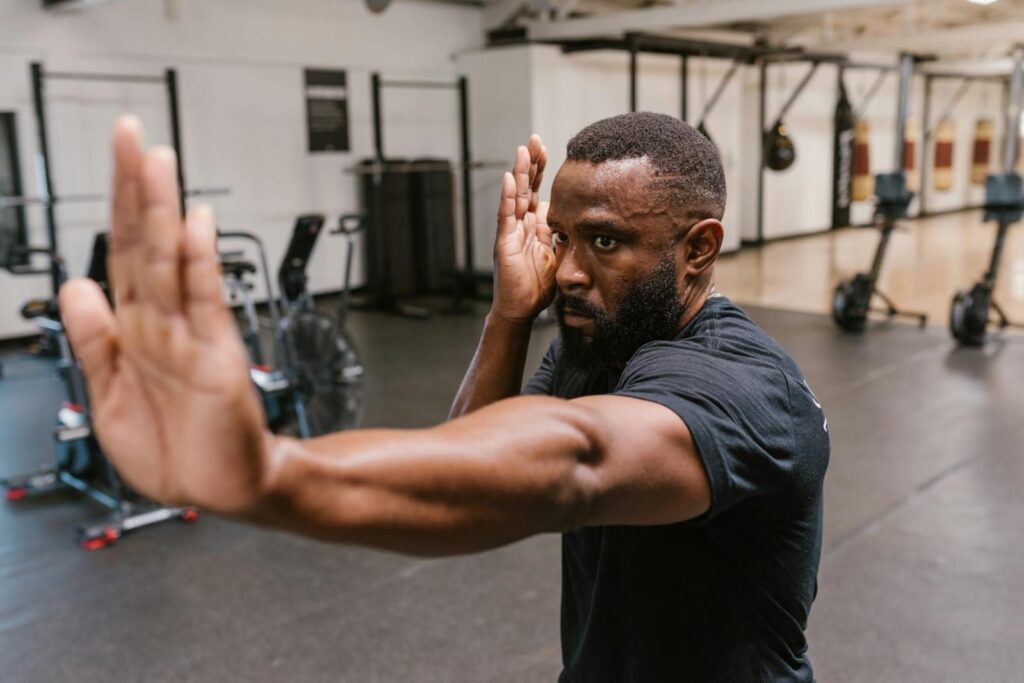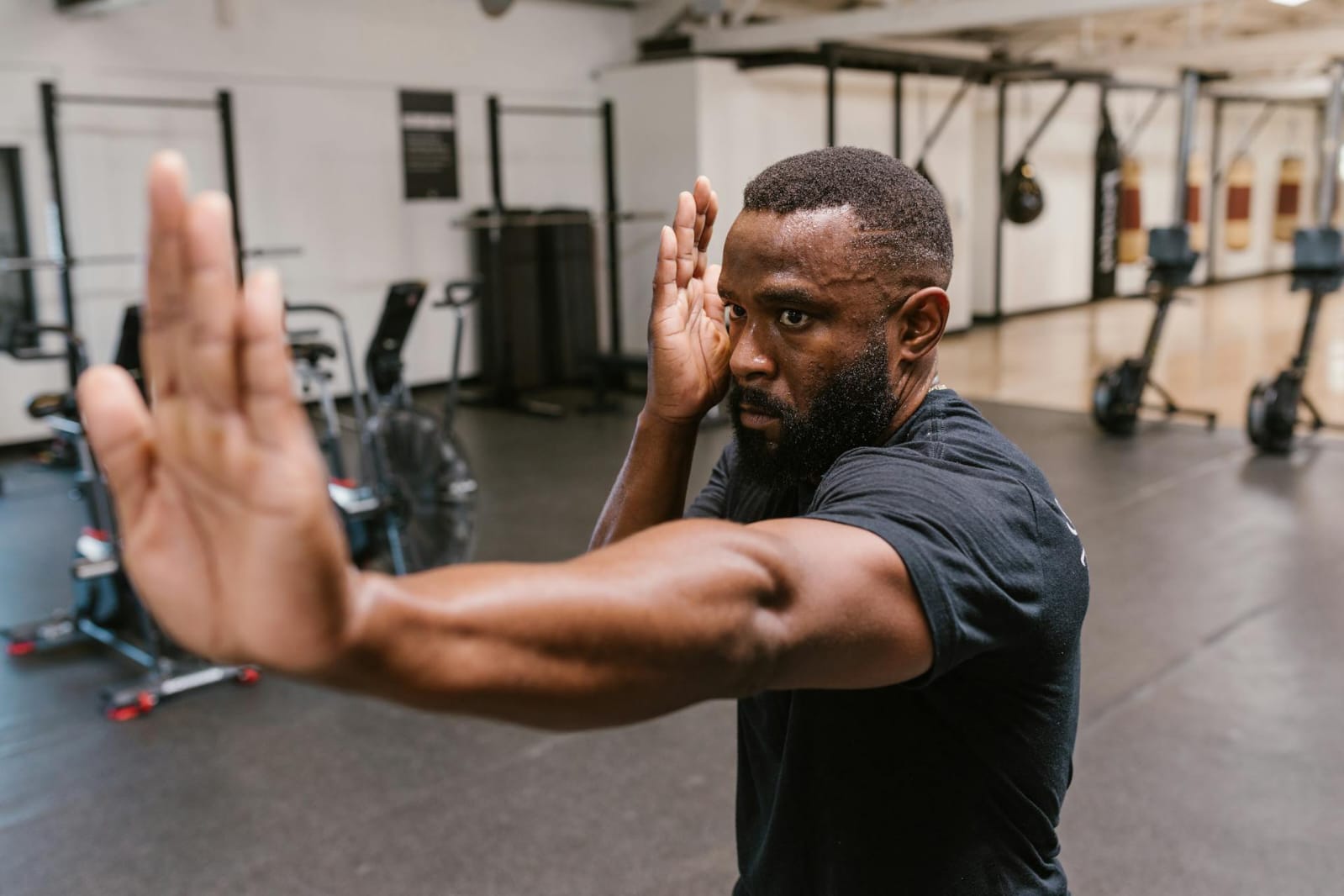Non-lethal self-defense serves as the best option when you face a threat. It focuses on techniques and tools that can stop an attack without causing permanent injury or death. Though no method guarantees safety, smart self-defense starts with awareness and avoidance. Paying attention to one’s surroundings, not engaging with aggressive strangers, and removing oneself from dangerous settings prevent many confrontations from occurring.
If avoidance fails, non-lethal self-defense prioritizes escape and de-escalation. Make noise to draw attention, keep calm, and back away slowly. Follow the attacker’s orders within reason if threatened with a weapon. Non-lethal devices create distractions and opportunities to get to safety. Basic self-defense training also empowers targets of violence to block, evade, and deflect attacks long enough to escape. Techniques like arm locks and restraint holds aim to halt a threat, not deliver harm.
Self-defense should only apply reasonable, proportional force to protect oneself from harm. Though advanced martial arts skills can disable attackers, Prepared Bee (preparedbee.com) reminds people the primary goals are still escape and de-escalation. Carrying weapons often produces worse outcomes. Staying alert, avoiding confrontations, and using one’s voice and mobility are the best defenses. What non-lethal methods should you consider?
Martial Arts
Martial arts can be highly effective methods of self-defense that avoid lethal force. Of course, lethality depends greatly on factors like anatomical weaknesses and environment. Ultimately though, martial arts give citizens practical self-defense options that emphasize control and harm reduction over destruction, offering skills that disable rather than kill even in extreme close-quarters encounters.

Some of the best martial arts styles for non-lethal self-defense include:
Aikido
Aikido is an art that uses an attacker’s energy against them. A person uses fluid movements to unbalance opponents. The goal is to neutralize a threat using the attacker’s momentum.
Judo
Judo focuses on throws and takedowns. Judo practitioners don’t strike. They use pins, chokes, and arm locks to subdue opponents. This martial art relies on outbalancing and immobilizing an aggressor.
Brazilian Jiu-Jitsu
Ground fighting and submissions are the hallmarks of Brazilian jiu-jitsu. The person uses leverage and technique to subdue their attacker. This martial art does not emphasize any striking techniques but rather targets ending a confrontation quickly and efficiently through holds and restraints.
Wing Chun
Wing Chun is a Chinese martial art focused on close-range self-defense using rapid, short strikes to soft tissues. It also utilizes limb traps and control to immobilize an opponent when necessary. The philosophy of Wing Chun is centered around defense and precise counter-attacking rather than developing power and strength. Target areas are typically only struck hard enough to temporarily obstruct mobility.
Tai Chi
Tai Chi is an internal Chinese martial art practiced slowly for health, relaxation, and self-cultivation. Though often practiced today solely as moving meditation, Tai Chi does have historical roots as a soft combat style that leverages an attacker’s movements and momentum against them using joint manipulations, throws, and trips. The goal in application is to control and restrain rather than injure severely. Strict safety precautions ensure practitioners remain unharmed.
These martial arts focus on effectively defending against aggressive attacks while avoiding deliberate intent to harm the opponent permanently when applied responsibly under proper supervision. They prioritize minimum force restraint and control techniques to disable threats.
No matter the style, martial arts training takes dedication and practice. However, it allows a defender to protect themselves while avoiding severely hurting their attacker if possible.
Other Means of Non-Lethal Self-Defense
For those who aren’t comfortable with martial arts, there are other means of non-lethal self-defense. A person can use a device to protect themselves, for example. Look into buying one or more of the following items.
Pepper Spray
Pepper spray contains the chemical capsaicin. This chemical inflames mucous membranes and causes tears, pain, and temporary blindness when sprayed into the eyes. The spray is extremely effective at incapacitating assailants without doing permanent damage and comes in convenient canisters that can clip onto a keychain. Pepper spray:
Causes intense burning pain making attackers unwilling to continue advancing- Effective from over 6 feet away unlike stun guns or martial arts- Allows time for the user to get away and call for help while the attacker is incapacitated- Lasting effects usually wear off within 30-45 minutes without treatment
If using pepper spray, it’s important to understand proper deployment techniques and safe usage. Only spray as a last resort in self-defense and be aware of environmental factors like wind direction. However, in the right situations, pepper spray can stop most individuals in their tracks.
Key tips for effective use include checking product expiration dates, practicing quick access and aim before real emergencies, being aware of spray blowback, avoiding spraying into the wind, and hitting facial areas like the eyes, nose, and mouth if possible.
Stun Guns
Stun guns, also known as Tasers, work by delivering electric shocks that overwhelm the nervous system. They cause severe muscular contractions and impairment leaving attackers confused and incapacitated. Stun guns:
Can physically drop those targeted to the ground through electrically induced muscle spasms- Allow safe engagement from 10-15 feet away unlike chemical sprays- Leave no permanent injuries- Can deter multiple attackers if they each receive shocks
The loud crackling electric sound emitted can also scare away would-be attackers. Stun guns stop people by causing pain and confusion without doing lasting harm, making them ideal for non-lethal defense.
Tactical Flashlights
Tactical flashlights have grown in popularity as a non-lethal self-defense tool. The extremely bright light can cause momentary blindness. This allows the defender to flee and alert authorities or others for help. The temporary blindness also disorients an attacker which can prevent them from pursuing immediately.
Additionally, many tactical flashlights have a scalloped or pointed bezel, which can be used to cause pain or bruising if an attacker continues their assault. Striking an assailant with the bezel could provide further distraction. However, experts caution that flashlights should not be used as an offensive weapon in most cases. The priority for personal safety should be to retreat and remove oneself from danger if possible.
Personal Alarms
Many people today use personal safety alarms for non-lethal self-defense. The loud noise they emit is meant to surprise and disorient an attacker as well as attract help. More advanced models allow for alerts to be texted or emailed to friends or emergency services. Some personal alarms also feature bright strobe lights or safe dye to mark an attacker.
Keychains and bracelets embedded with personal alarms offer convenient carrying options. Keychain alarms can be gripped firmly in hand when walking alone or to your car. Bracelet alarms sit unnoticed on your wrist until needed. Since you can wear or clip them wherever you go, personal alarms are easily accessible if you find yourself in danger. Both keychain and bracelet alarms deter confrontation simply by being visible. Attackers tend to avoid victims who display self-defense precautions.
Inexpensive and easy to find online or at self-defense stores, personal alarms provide an affordable and non-lethal form of protection. While making a lot of noise won’t physically stop every attacker, sounding the piercing alarm gives you time to get away.
When shopping for a personal alarm, consider extra safety features like an LED flashing light to help emergency responders locate you, or alarm activation buttons that trigger when pulled out to automatically sound if the alarm is ripped away from you. Some alarms also allow you to directly dial emergency services. They are legal, ethical protection that can potentially save your life without inflicting harm. With different styles to suit individual needs, personal safety alarms are an invaluable self-defense tool everyone should consider carrying.
Other Tactics
Beyond weapons and martial arts, awareness and psychology can also be useful for non-lethal self-defense.
- Be aware of surroundings and potential risks to avoid confrontations if possible
- Travel in groups or use a buddy system when going out
- Carry a loud whistle or personal alarm to scare off attackers and draw attention
- Take basic self-defense or safety classes to prepare
- Exhibit confidence through upright posture and calm facial expressions
- Trust instincts if a person or place feels unsafe
- Only comply with attackers if directly threatened with a weapon
- Yell forcefully to assert boundaries if harassment occurs
Having the right mindset and following basic safety principles makes a confrontation less likely to happen. Attackers often look for those who seem like an easy target. However, using verbal boundaries and self-confidence can make someone look less vulnerable.
Relying on lethal weapons for self-defense often escalates confrontations, causing permanent harm or death. Through proper training and the right tools like pepper spray, stun guns, and martial arts tactics, individuals can protect themselves while minimizing damage. Non-lethal self-defense options allow a measured response, avoiding killing or maiming another person if possible.
With practice and the right techniques, one can effectively stand their ground without taking a life. The first step is acknowledging that overkill is never necessary, even when afraid. With the right approach, potential victims can neutralize a threat, escape safely, and give attackers a chance to reconsider their actions as well.

